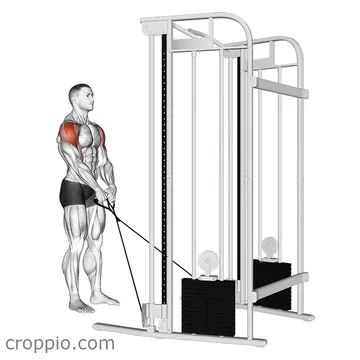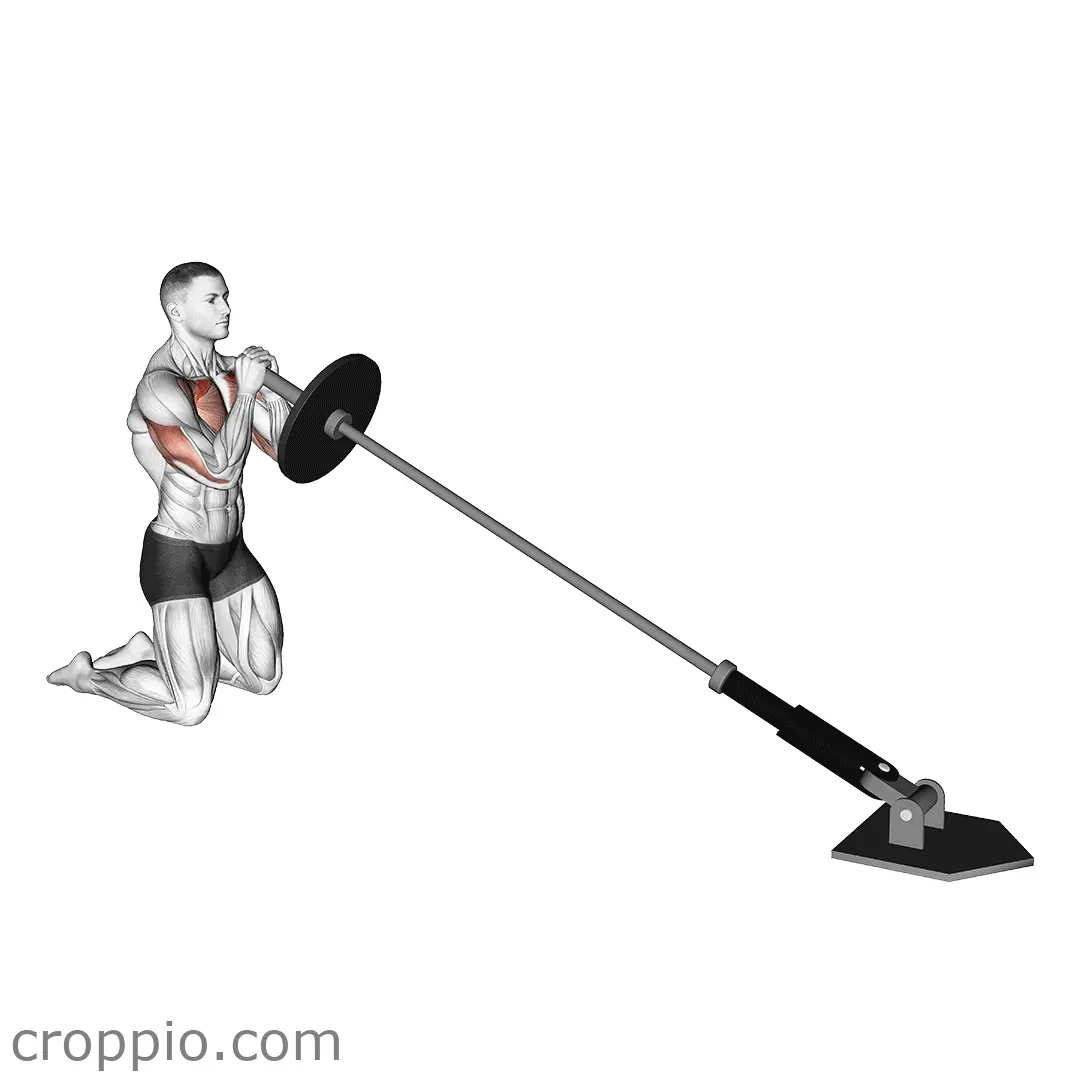Cable Y Raise Movement

Muscles Involved
The cable Y raise movement is a highly effective exercise that primarily targets the shoulders, particularly the deltoid muscles. The anterior (front) and medial (side) deltoids are engaged significantly throughout the movement. Additionally, this exercise activates the upper trapezius and supraspinatus, supporting shoulder stability and mobility. Secondary muscles involved include the rhomboids and serratus anterior, which help stabilize the shoulder blades during the movement, promoting better posture and overall upper body strength.
Top Mistakes
- Using Excessive Weight: Lifting too heavy can compromise form and increase the risk of injury.
- Poor Posture: Slouching or leaning excessively can reduce the effectiveness of the exercise and lead to back strain.
- Incorrect Range of Motion: Not raising the arms high enough or going too far can prevent proper muscle engagement.
- Rushing Through Repetitions: Performing the exercise too quickly reduces control and form, diminishing benefits.
Execution Tips
- Setup: Begin by setting the cable at a low position, typically at or below knee height. Stand facing the cable machine with feet shoulder-width apart.
- Correct Grip: Use a neutral grip holding the cable with your arms extended down at your sides.
- Maintain Posture: Keep your chest up, shoulders back, and core engaged throughout the movement.
- Movement Technique: Raise the cable into a Y shape, aiming to lift your arms at approximately a 45-degree angle relative to your body, ensuring elbows remain slightly bent.
- Control the Descent: Return the weights slowly to maintain tension in the muscles and optimize the workout.
Workouts
The cable Y raise can be seamlessly integrated into a shoulder or upper body workout routine. Aim for 3-4 sets of 10-15 repetitions, depending on your fitness level. As a complement to the cable Y raise, consider pairing it with exercises like standing dumbbell shoulder presses, lateral raises, and bent-over rear delt flys to ensure comprehensive shoulder development. Allow for adequate rest between sets to maintain proper form throughout each repetition.
Conclusion
The cable Y raise movement is a vital exercise for building shoulder strength and enhancing overall upper body performance. By focusing on proper execution and avoiding common mistakes, you can effectively target the essential muscles while minimizing the risk of injury. Incorporating this exercise into your fitness regimen will not only improve your shoulder stability and mobility but also contribute to better posture and functional movement patterns.



